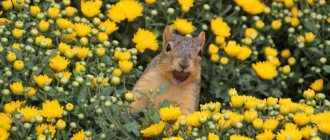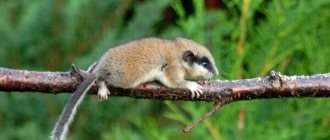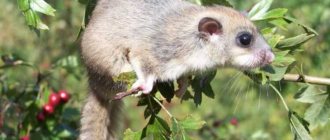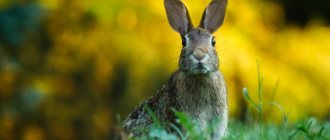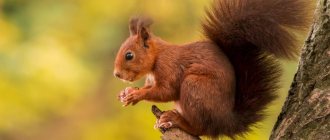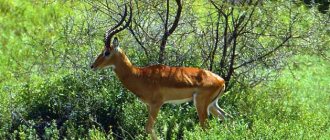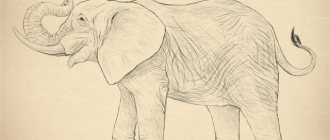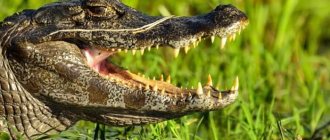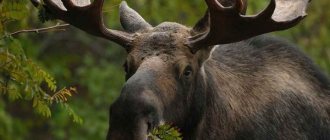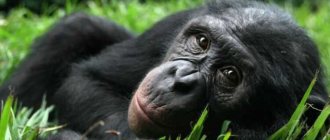Types of rodents
"Funambulus sublineatus" redirects here. For the similar Sri Lankan squirrel, now called the dark striped squirrel, see Funambulus obscurus.
| Nilgiri striped squirrel | |
| Save Status | |
| Vulnerable (IUCN 3.1) [1] | |
| Scientific classification | |
| Kingdom: | Animalia |
| Type: | Chordata |
| Class: | Mammals |
| Order: | Rodentia |
| Family: | Sciuridae |
| Genus: | Funambulus |
| Variety: | F. sublineatus |
| Binomial name | |
| Funambulus sublineatus (Waterhouse, 1838) | |
| Subspecies [2] | |
| See text | |
| Synonyms | |
| Sciurus delesserti Gervais, 1841 | |
Nilgiri striped squirrel (Funambulus sublineatus) from Palakkad, Kerala, India
Nilgiri striped squirrel
(
Funambulus sublineatus
) is a threatened rodent species, a small squirrel (Sciuridae) from the tropical forests of the southern Western Ghats, including Nilgiris, in peninsular India.
It previously included Funambulus obscurus
from Sri Lanka as a subspecies, after which the English name for the "combined species" was also dusky banded squirrel (the name is now limited to the Sri Lankan species).
Main characteristics of squirrels
The appearance of an ordinary squirrel does not have any striking features. The animal has an elongated body, a voluminous fluffy tail and elongated ears. The squirrel's paws are strong and its claws are pointed. Due to its strong paws, the rodent is able to quickly and easily move along branches and tree trunks.
An adult individual differs from young squirrels in its large tail, which occupies 2/3 of the entire body. It functions as a “steering wheel”. It catches air currents and maintains balance.
At the same time, the squirrel needs its tail for shelter while sleeping. When searching for a partner, the condition of the tail is considered an important criterion. The squirrel pays special attention to him. A fluffy tail is an indicator of a rodent's health.
On average, a squirrel animal has a body size of 20-31 cm. Large rodents are approximately 50 cm, while the length of the tail is equal to the size of the body.
The rodent's fur coat differs in winter and summer, because the squirrel sheds twice a year. In the cold season, the fur is soft and dense, on hot days it is short and thinned.
The fur has different colors - dark brown, dark gray, red, etc. As a rule, in the summer the animal's fur coat becomes a reddish color, and in the winter it becomes bluish-gray.
Reviews about maintenance at home
Judging by the reviews of people who keep degu squirrels in their homes, these animals quickly get used to humans and adapt to apartment conditions. The owners of these animals note that caring for them is not difficult. You just need to spend enough time communicating with your pet.
Chilean ground squirrels are rodents, so their diet must include cereals, dried peas, oat seeds and sunflower seeds. You can also give ground crackers little by little. The daily menu should include juicy food: not sweet fruits, hard vegetables. Sweet foods should not be given to degus, as diabetes may even develop. You should also not feed the animal with dairy products.
Common squirrel
The most popular variety of the squirrel family. Habitat: Eurasian territory from Ireland to Japan.
In addition, the squirrel is not afraid to live close to people. We can see this while walking through a forest or park area. Fur color is red.
Animal breeding
First, let's think about where to go shopping. Squirrels, like other animals, can be bought in a special nursery, pet store or zoo. They are rarely sold at poultry markets, and besides, how can you check that the animal is healthy?
Like most animals, mating games for squirrels begin in the spring. The domestic squirrel bears its offspring for about 5 weeks, it performs maternal duties well, and the babies do not need additional care. A newborn baby is small, he is born weighing 8 grams, but grows quickly, since mother's milk contains all the components necessary for growth and development. At 2 weeks fur appears on their body, at 4 their eyes open, at 40 days they go in search of food, since their mother’s milk is no longer enough for them. At 2 months, the baby squirrel is completely independent. At 5 months, squirrels are sexually mature individuals. But not everyone can get offspring in captivity.
Abert's squirrel
Location: coniferous forests of the USA and Mexico. Its difference from other species is its largest size.
Note!
Animals of the Red Book of Russia: complete list of animals, photo, name, description
- A Guide to Fish Oil and Omega-3
Koala: photo, lifestyle, habitat, habits, character, types, interesting facts
The body length of an adult squirrel reaches 46-58 cm. The fur has a grayish tint.
Behavioral features
Rodents of the squirrel family belong to active animals that lead an arboreal lifestyle. They make almost no effort when jumping from one tree to another. During the jump, the animal helps itself with its tail and paws. Depending on the type of forest, the appearance of the place of residence changes:
- in deciduous forests the rodent lives in a hollow, the bottom of which is lined with dry grasses or lichen;
- in coniferous forests they make nests for themselves, which they build from branches; they lay wool, moss, and dry leaves on the bottom.
The animal can occupy empty bird homes. The number of such nests in one squirrel can reach 15; it can change its place of residence every two or three days. Thus, from 3 to 6 squirrels can winter in one nest.
Mass migration of animals begins in early autumn. The animals are capable of moving 300 km from their previous place of residence.
Red-tailed squirrel
Their habitat is the tropical forests of Central and South America.
The animal of this species has a rich red tail and a body length of 30 to 50 cm, which distinguishes it from other fur-bearing animals.
Housing
Particular attention should be paid to the squirrel’s home. The cage should be spacious - at least 70 cm in height, length and width. It is better to buy an iron cage, as the squirrel will quickly chew a plastic one. There must be a sufficient number of branches, roots and grains in it so that she can constantly gnaw on something.
Squirrels are very active, they need to constantly move, jump... so you can buy a wheel, usually they buy something that is suitable for chinchillas. It is not difficult to independently build small labyrinths and low stairs for active squirrels.
What should be in the cage:
- Hay;
- Sippy cup;
- Filler (wood, paper, pressed sawdust);
- Nest house;
- Wheel.
There is no need to place the squirrel’s home next to a radiator, window, or door. Let it be a quiet, inconspicuous corner where she will feel calm and comfortable, especially at first.
What should not be in a cage:
- A lot of toys;
- Glass;
- Dirt, garbage.
Where do squirrels live?
Where do squirrels live? The territory inhabited by squirrels is extensive. But there are also places where they are not. For example, the squirrel is not found in Australia, on the island of Madagascar or in the southern part of South America.
The squirrel lives in forest areas. She feels comfortable among the many trees. For this reason, squirrels cannot be found in places where there is no vegetation, for example, in the desert.
The squirrel spends almost its entire life in trees, so they are an integral part of its life. They move well from branch to branch, climb the trunk, clinging to it with sharp claws.
Reproduction
The number of litters a squirrel has will depend on its habitat; most often they give birth once or twice a year, but in the southern regions it can be three times. There is a main interval between each litter, which does not exceed 13 weeks. The breeding season will depend on many factors:
- climate;
- harvest;
- population size.
Typically, the rutting time falls in January-March and can last until August. At this time, up to 6 males can be observed near the female, of which she makes a choice in favor of one. Males behave aggressively among themselves in order to eliminate the competitor. They can purr loudly, hit tree branches with their paws, or chase each other. After making the choice, the family begins to build a nest for future offspring.
The female's pregnancy lasts up to 38 days; one litter can consist of 3 to 10 babies. Baby squirrels are born blind and without fur, which they acquire in the second week of life. The babies will be able to see only after a month, after which they begin to climb out of the hollow to play. Females feed the squirrels with their milk for 50 days. The brood leaves the nest at 10 weeks. Animals can have their offspring at 9 or 12 months.
How a squirrel prepares for winter
In preparation for the winter season, the squirrel makes many shelters for storing summer and autumn supplies. Having collected mushrooms, nuts, and acorns, she takes them into hollows or burrows. At the same time, the squirrel makes holes for minks itself.
Sometimes the squirrel's supplies are eaten by other animals that have climbed into its shelter. It happens that the squirrel itself does not remember where it hid its supplies.
How does a squirrel behave in winter? During cold weather, the animal is in a hole and may be dozing. If the frosts are mild, the squirrels live as usual. Sometimes they are able to pull food supplies out of other people's burrows.
About keeping at home
Squirrels are amazingly cute and fluffy creatures that are always active and cheerful. And many people think that if you have them at home, it will be a complete holiday. This is actually not the case when it comes to regular protein. In most cases, this cute animal, which many people like to hand-feed in the parks, is completely unsuitable for keeping at home. Or rather, approximately 90% of squirrels are not suitable, since it is known that 90 out of 100 animals will sooner or later scratch or bite the owner. Only 10% of animals tamed from a young age can become affectionate and cute. This is due to the fact that ordinary proteins have an unpredictable character; they have a tendency to periodic mood swings, depending on hormonal levels.
It's a different matter with the Chilean squirrel, called the degu. This exotic, good-natured animal takes root well at home.
Life of a squirrel in spring
Spring time is considered difficult for squirrels, because food supplies have already run out and there are no fresh ones yet.
At this time, the squirrels do not have enough food, so some of them die of hunger. To survive, rodents eat tree bark or young plant shoots.
I would like to end the article with an informational video about the life of squirrels in natural conditions.
Feeding
The main rule when feeding degus is to follow a diet and exclude sweets and fats from the diet. Treats - cookies, fried nuts, food from the human table - all this should absolutely not be given to degus. Squirrels do not eat meat; they are vegetarians from birth; their food is fresh grass, plant roots and seeds. Now all this can be purchased at pet stores and some even in regular grocery stores. You should not overfeed the animal, it is better to give it portionwise - no more than 30% of the weight at a time, and so on 2-4 times a day.
Important! If you refuse food for more than a day, you should seek help from a doctor.
Rodent diet
An approximate daily diet for a degu squirrel is grain food with the addition of berries or herbs, a quarter of an apple, 3-4 pieces of carrots, 40-50 grams of white cabbage, 10 grams of muesli or raisins.
What can you feed
- Fruits (apple, banana, pear);
- Vegetables (cabbage, carrots, tomato, cucumber);
- Grains;
- Rusks;
- Dry peas;
- Hay (required, must always be available in the cage).
All products must be at room temperature and fresh.
What not to do
- Dairy products;
- Overripe and unripe vegetables and fruits;
- Homemade food;
- Fish, meat;
- Canned foods;
- I love any baked goods.
Be sure to install a sippy cup, preferably pour boiled or settled water, make sure that the water is not stained. Observe how the animal behaves after a snack; new foods should be introduced in small doses, even those purchased in a specialty store. Frequent scratching of the ears and other parts of the body is a possible sign of an allergic reaction.
Photo of squirrels
Diseases and prevention
The degu squirrel requires special attention to its health. The first signs of health problems are the eyes and teeth. If the teeth begin to turn white, then reconsider the pet’s diet; if spots appear on the eyes, the help of a veterinarian is required.
Frequent diseases of degus
- Conjunctivitis. This is a purulent and inflammatory process of the eyes, seek help from a veterinarian in this case for treatment;
- Cataract. More often this can be found in squirrels over the age of 6 years, a white spot on the brown background of the eye;
- Diabetes. This is perhaps the most common degu ailment. It manifests itself in the animal's lethargy, excess weight, and constant thirst. It cannot be cured, but can be avoided by following feeding recommendations;
- Colds. Degu does not tolerate temperature changes and drafts. Pay attention to the eyes - if they are watery, then the squirrel is sick. Also, mucus in the nose and apathy are signs of a cold. You can treat with a decoction of rose hips and calendula, but do not overdo it;
- Tumors. Especially in old age, this is associated with metabolic disorders.
